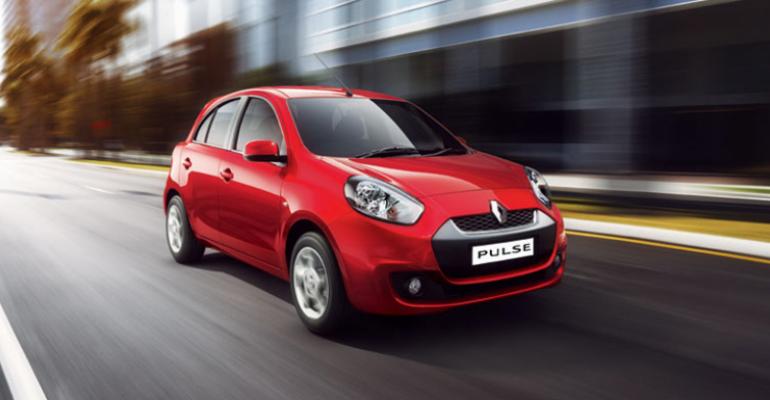ROUEN, France – Renault and Ford are developing special diesel engines for vehicles in emerging markets in Asia, where demand is expected to grow quickly in the coming three years.
Diesels already make up 36% of the market in India, and that share soon should grow to 45%-50%, says Andreas Shamel, managing director of Ford’s research center in Aachen, Germany.
“In China (diesels) are not popular, but they are offered by nearly every major OEM” and are expected to grow there as well, he adds.
The problem in emerging markets, Shamel tells a diesel powertrain conference here sponsored by the French automotive engineering society SIA, is poor-quality fuel with excessive sulfur.
While diesel in the U.S. and Europe has 15 parts-per-million sulfur, the fuel’s sulfur content in the Asia/Pacific region still will be at 250 ppm in 2015 and at 80 ppm by 2030, according to an Organization of Petroleum Exporting Countries forecast cited by Shamel.
“The sulfur forms deposits like ash clogging the particulate filter, triggering regenerations that don’t work because there is nothing there to regenerate,” he says. “If we deploy them anyway, we will have significant warranty concerns in (Asia/Pacific) markets.”
Emerging countries generally have been adopting European emissions regulations several years after Europe does, which has allowed European auto makers to develop and spread their technology.
But the fuel problem means “we can’t develop the technology in Europe and roll it out several years later in the emerging countries,” Shamel notes. Auto makers will respond by modifying diesel engines for India and other Asian markets that will meet those countries’ specific emissions standards, he says.
Both Ford and Renault face the challenge of configuring engines that most effectively control particulate matter production during combustion.
Bigger displacements and faster engine speeds consume more fuel than the Indian market demands, says Gasper Gascon-Abellan, Renault’s director of powertrain strategy.
The auto maker is developing a smaller, lower-powered diesel engine (probably 3-cyl.) for Asia/Pacific that can be tuned to produce less smoke. But Renault has not yet decided whether to make this engine because volumes would be low, he says.
Ford engineers at the conference say the U.S. auto maker is not developing a smaller diesel.
Renault makes its 1.5L dCi diesel at its factory in Chennai, India, as well as in Spain and Turkey. Diesels power 80% of Renault sales in the country. The auto maker also plans to build diesels in a Thailand plant Nissan is building.
The Thai facility will produce a powerplant different from both the 1.5L and potential new smaller engine, Gascon-Abellan says. It will be designed for light utility vehicles worldwide, and some will be exported to Europe.
“Renault believes in the future of diesel,” says Jacques Prost, senior vice president-Renault Powertrain. The auto maker’s diesels offer the best fuel efficiency in the A, C and D segments, and will take the leadership in the B segment when the new Clio arrives later this year with the fourth generation of the 1.5L K9K engine.
Prost says diesel and gasoline engines each will account for 45% of Renault sales in 2020, the remaining 10% being electric cars.





